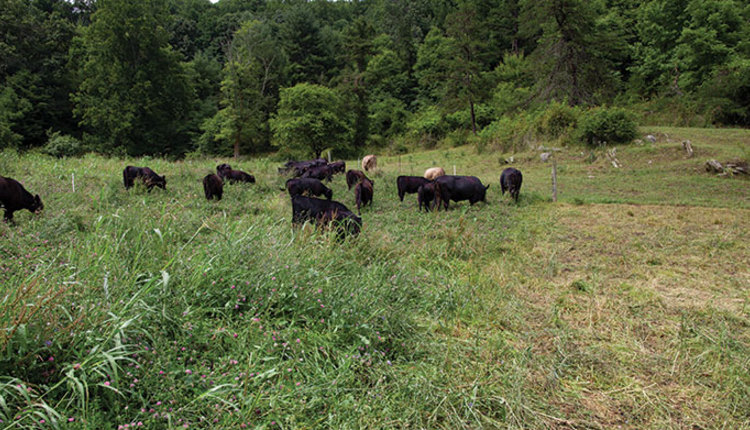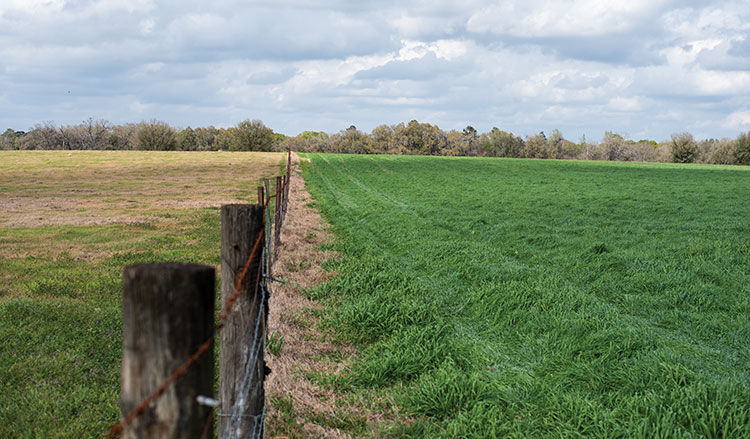
A forage program should be customized to each operation, its soil types, climatic conditions, and resources. There are no magic bullets when it comes to developing and maintaining a good forage program. Instead, success comes from paying attention to the details, planning ahead, and making well-informed, science-based decisions.
This article will use an example cow-calf operation in central Texas to illustrate ways to develop a successful forage plan. This example could apply to many operations across the Southeast. Additionally, it can provide ideas for other areas of the country, even though different forage species and timing would apply.
One of the first steps in developing a good forage program is understanding the climatic conditions for your area. How long is the growing season for the perennial forage(s) that will serve as the base for the operation? What is the average annual rainfall, and how is it distributed throughout the year? When is the average first killing frost?
Answering these questions along with others is critical to selecting appropriate forages and developing a forage program that allows for grazing during as much of the year as possible.
For this example, bermudagrass will be used as the perennial forage that will serve as the base. In central Texas, bermudagrass generally produces meaningful growth from May through October. That means there are five and a half to six additional months that need to be filled with other grazing options, if possible.

Stockpile and use annuals
Stockpiled bermudagrass will generally provide an additional six weeks of grazing from the first killing frost around November 15 until about January 1. Stockpiled bermudagrass should generally be utilized within about six weeks after the first killing frost in moderate- to high-rainfall areas.
After about six weeks, microbial growth on the stockpiled forage will cause degradation and reduce palatability. Additionally, depending on the amount of rain, it may also end up laying on the ground. Stockpiled forages can last much longer in more arid areas.
Planting a cool-season annual like ryegrass on part of the operation can provide high-quality forage from February through May. So, in this example with just two forages (bermudagrass and ryegrass), 10 to 11 months of grazing can be achieved with proper grazing management, appropriate fertilization, and average weather conditions. Hay would be used to fill in the gap from the end of stockpiled grazing until the ryegrass is ready for full-time grazing. Prior to grazing the ryegrass full-time, it can be limit grazed in December and January along with feeding hay. If the environment is conducive to ryegrass, it can be a very cost-effective option and be produced for about $25 to $50 per ton of dry matter, depending on yield, nitrogen cost, seed cost, and planting expenses.
To make a forage system like this work requires proper stocking and good grazing management. Unfortunately, many forage programs are not successful because an operation is overstocked for its capacity or for the current level of management.
The USDA Web Soil Survey can be used to help determine grazeable acres. Grazeable acres can be significantly lower than the total number of acres because of woods, roads, ponds, lakes, barns, houses, and other situations that prevent forage production or grazing. The area of interest tool can be used to measure the size of pastures, as well as the wooded areas and ponds. Additionally, the Web Soil Survey is a good way to identify different soils in regard to how they vary in yield potential and if they are suited for a particular forage species.
Rest and regrow
Although rotational grazing is not the magic bullet some would like it to be, it is a critical part of a good forage program. Rotation allows forages to rest and regrow. Forages that have not been grazed too short will regrow faster and produce more forage over the season. Keeping the rotation program simple works best for most operations. In the example used above, having three to six pastures to rotate among would work well. This allows various pastures to be cut for hay, stockpiled, or overseeded with a cool-season annual.
Producing quality hay is also a component of many good grazing plans. When possible, it is better to have multiple fields that can be grazed or cut for hay instead of a single hayfield. This allows for flexibility if weather conditions prevent timely hay harvest. Graze the field that was ready for harvest and allow another field to grow and then be cut for hay.
A grazing program that results in adequate forage, which allows the cows to selectively graze the top 1/3 to 1/2 of the plant, will lead to cows in better body condition, calves with improved weaning weights, and reduced costs. Continually evaluate your forage program to see how grazing management might be improved, or if adding another adapted forage species could extend the grazing season.
This article appeared in the March 2021 issue of Hay & Forage Grower on pages 24 and 25.
Not a subscriber? Click to get the print magazine.

